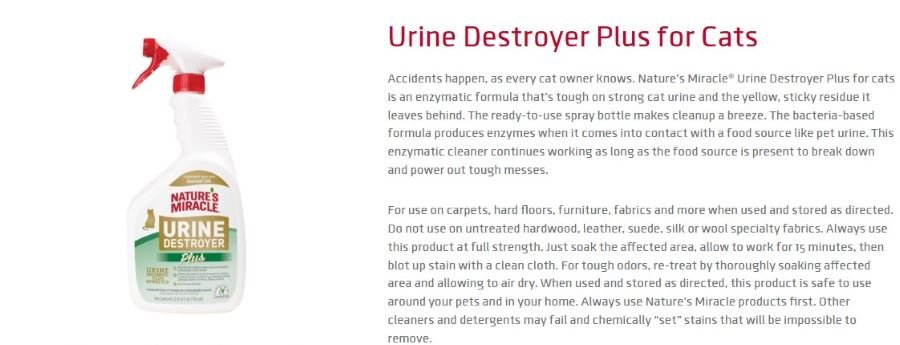Selling a Smelly House: Pet Odors, Cat Urine and More
Not long ago we renovated a very smelly house. The smell was so bad that it was difficult to stand in the home for more than a few minutes. The smell was a mixture of what I would describe as dead animal, decay and heavy pet urine.
The house was home to over 20 cats (half of those were kittens) and the tenant was allowing them to live in and around their own excrement (which was all over the floors and even on the owners’ bed in multiple places), cat urine that was being sprayed on walls and floors and not cleaned, and the home was incredibly dirty in general. The picture below shows one of the rooms in the home. Many of the dark spots on the ground are cat poop and urine stains.
It is tough to sell a house in this condition to anyone other than a cash buyer.
This was a sad situation. It was very bad for the tenant’s health (they complained about difficulty breathing and needing asthma inhalers, which made sense given the amount of pet hair, bacteria-ridden air, and the heavy stench), it was very bad for the cats who were also living in squalor, and it was very bad for the house itself.
The owner of the home did not want to deal with the situation and just wanted to sell fast. The owner also understood that this house would not sell to someone who wanted to move into it due to its very poor condition, the amount of work involved, and the presence of a tenant, so the traditional first-time buyer or family-buyer was not an option. Moreover, due to the condition of the home it would be difficult for buyers who rely on financing to find a bank that would be willing to loan on the property.
This type of scenario is where a cash buyer can really be useful and add value to a seller. We do not need a bank to approve our purchase, we do not care about the rough condition of a home, we do not need to do third-party professional inspections, we close quickly and we never ask sellers to make repairs or to remove any belongings they want to leave behind.
Here, we were able to come in and buy this home quickly for cash and cover the seller’s closing costs removing, as they described it, a “big weight from their shoulders.”
This article will go through the steps we took to get rid of the smell after our quick cash purchase of the house. While this house was in extremely rough condition, if you are trying to sell a home fast and it has any issue with pet odor or other bad smells, what we learned when removing the smell from this house might help you sell your home quickly and for a better price than you otherwise would. Even making some minor improvements to bad smells in a home could help you when you want to sell.
TABLE OF CONTENTS:
Step 1: Remove the Obvious Sources of Odor
Step 2: Remove the Less Obvious Sources of Odor
Step 3: Treat and Seal Every Remaining Possible Source of the Smell
Step 4: A Note About Ozone Machines (Never Use in Occupied Spaces and Consider Avoiding)
Step 1: Remove the Obvious Sources of Odor
To state the abundantly obvious, the first step to the process and the very first thing we did was to remove all the clear sources of the stench. While the advantage of selling to a cash buyer is that they will take on all of this work themselves, if your goal is to list a property that smells on the market, removing and/or cleaning everything that contains the smell should of course be your first step.
Just for example, at the bottom of the picture below you can see a nasty urine stain that soaked through the carpet, which of course had to go along with the rest of the carpet in the home, as well as all of the furniture and drapes.
After closing on the home, we quickly went to work and filled a 30-yard dumpster with all the old carpet and all of the furniture and other belongings that the tenant said they did not want to keep. When we were done, the smell coming off our completely full dumpster was unbelievable and it was a huge relief to have a big source of the stench removed from the home.
Step 2: Remove the Less Obvious Sources of Odor
Unfortunately, as the home had been inundated with the smell for such a long time, the obvious sources of the stench were just a part of the problem.
Now it was time for us to really get to work.
For those who have experience in construction and/or have dealt with this type of issue in the past, what I discuss here will seem obvious. However, if you are dealing with a situation like this for the first time, this may help:
Anything that is porous can absorb not only the physical sources of the smell (such as the cat urine itself) but also the airborne particles that are being constantly circulated through the ducts.
What is more, if your ducts are located on the floor there is a possibility that the animals in the home have been going to the bathroom in those duct openings or that contaminated material has fallen into those ducts over time.
In this house the ducts themselves were filthy (we saw cat poop in them, amongst other things), rusting, and generally not worth salvaging. You can actually see the urine stains around the floor duct in the picture above.
There are certain coatings that can be sprayed through ducts to seal them and create a new surface within them. In our situation with the ducts as bad as they were, and to avoid the risk that a coating would not sufficiently seal off every inch of the ductwork that could be producing the smell, it made much more sense to vacuum out and fill the old ductwork that was in our concrete slab foundation with poured concrete, install brand new ducting in the attic and drop it down through the ceiling.
As far as the porous surfaces we needed to remove, that included (1) all of the baseboard, (2) a lot of the trim around doors and windows, (3) wood cabinetry, (4) old doors and (5) certain bottom portions of drywall that had clearly been targeted by the cats. While some might decide to remove only those portions of baseboard and trim that had definite signs of damage, we knew just from removing pieces of these items that it had all absorbed the horrible smell of the home and had to go.
Your situation may be different, but if you are going to list your smelly house for sale on the market as opposed to selling to a cash buyer, this is the abundantly cautious approach to eliminate all possible sources of bad pet smells before you list.
Step 3: Treat and Seal Every Remaining Possible Source of the Smell
With the obvious and less obvious sources of the smell removed from the house and the house thoroughly cleaned, it was time to be extra cautious by treating and sealing all the remaining possible sources of the smell.
This house has a concrete slab foundation, and we could actually see stains in the concrete from cat urine that had soaked through the carpet. As we were of course not going to be taking out chunks of the foundation, we had to do our best to treat and then seal the concrete.
It was especially stained around the edges where the concrete meets the walls (exactly where we found the most cat urine stains in the carpet).
Our treatment approach started with an enzymatic cleaner that is supposed to include bacteria that produce enzymes that feed on the ammonia in the urine. We used a product by the brand Nature’s Miracle called “Urine Destroyer Plus” (we do not get paid by anyone for referencing that product, it is just what we actually used and there are many others on the market). While this product helped a little with the smell, do not expect any miracles (pun not intended).
If you are trying to sell a home quickly to a cash buyer (or anyone else) purchasing and applying an enzymatic cleaner is probably one of the least expensive and easiest things you can try, but don’t have high expectations for massive improvement. These types of products work best when used very soon after the mess is made, but not in situations like the one we faced where the problem had been left to fester for years.
After the enzymatic cleaner, we applied a shellac primer over nearly every exposed surface, with additional coats on areas that we saw had been directly exposed to cat urine. Shellac is a product that can permanently seal odors and stains behind it, so if you are trying to sell a stinky home quickly and do not have time to do everything we describe, it is certainly worth trying shellac on particularly bad portions of walls, doors and trim that contain the smell.
We used the shellac-primer made by Sherwin Williams shown above for this part of the project. I have generally found that Sherwin Williams products are better than those from Home Depot and Lowe’s, and you do not need to pay list prices for Sherwin Williams paints (the list prices are inflated and there are ways to pay far less – check out this article about paying less at Sherwin Williams).
Home Depot and Lowe’s both sell odor blocking primers as well, such as the Zinsser Odor Killing Primer, and you can certainly test them out.
Step 4: A Note About Ozone Machines (Never Use in Occupied Spaces and Consider Avoiding)
I do not advocate the use of ozone machines for many of the reasons you can see at this EPA link. However, I know that many buyers and sellers of real estate have tried them, talk about them, and report moderate-to-good success when it using them to prepare a smelly home for a fast sale.
We have personally experimented with ozone machines in unoccupied spaces and from our anecdotal experience, they do seem to help a little in reducing bad pet smells. However, we have not done it enough times, in enough different scenarios and with enough long-term testing regarding the amount of time running the machine, the frequency of uses, etc. to identify the best protocol and whether the positive impact on pet smells would last for just a few weeks, months, or years or decades.
There are also very clear health concerns when it comes to using ozone machines in occupied spaces, so that should never be done. There is also a possibility that the ozone produced by ozone machines will interact with building materials and create other harmful compounds.
We personally would never use them unless a space was unoccupied and would remain unoccupied for some time afterwards, with plenty of time allotted for ventilating the space with no people or animals present after the treatment is done.
Again, you are taking a risk if you use an ozone machine. Please educate yourself thoroughly before doing so!
As you can see, there is a lot you can do to improve the situation if you are dealing with a house full of terrible smells. Even making marginal improvements, particularly when you are starting with a situation that is very bad, can help you sell your property more quickly and for a better price. Best of luck, and feel free to call us if you have questions or want to discuss the sale of your home.









